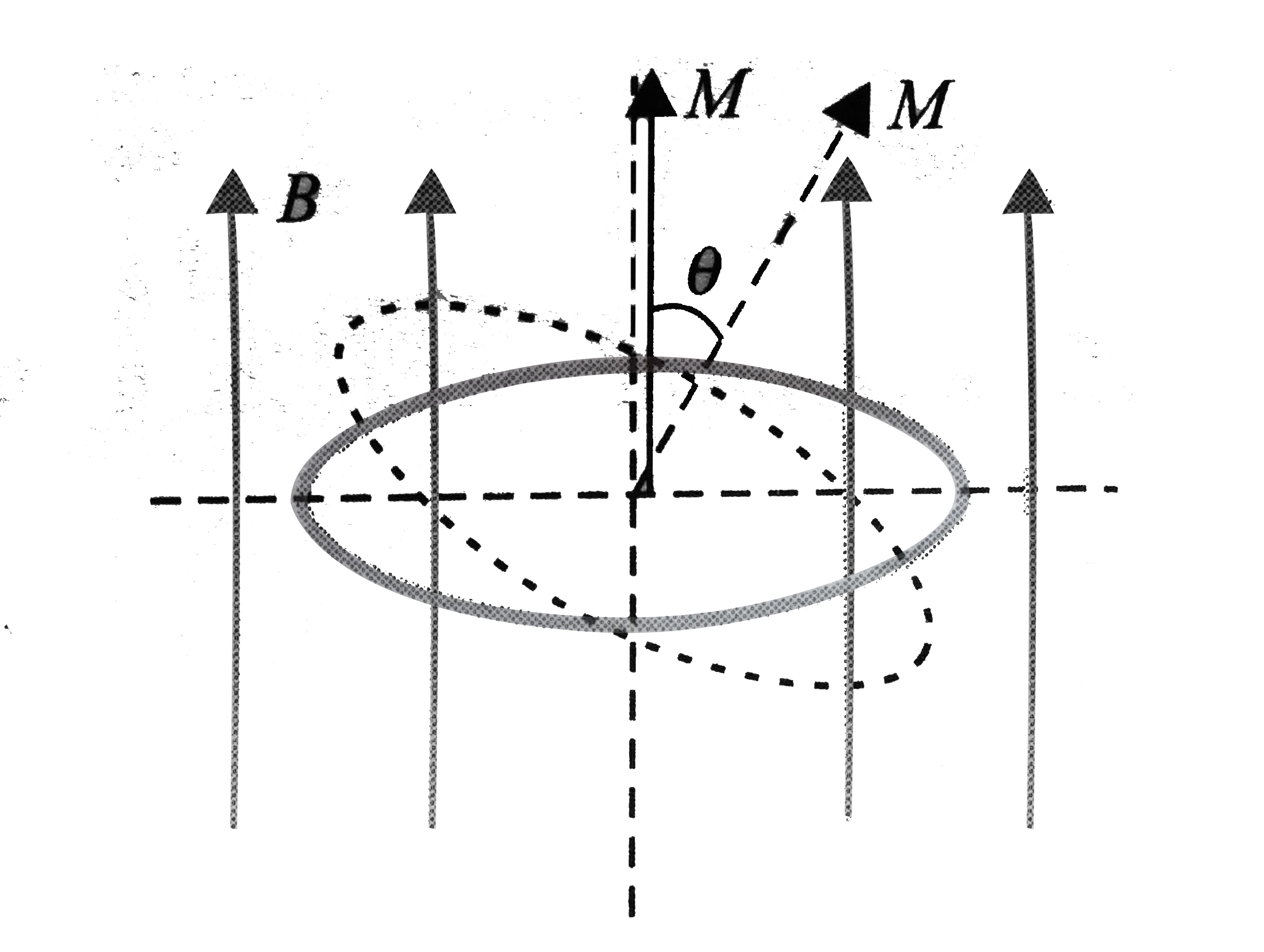A small circular coil with a mass of m consists of N turns of fine wire and carries a current of I. The coil is located in a uniform magnetic field of B with the coil axis orginally parallel to the field direction.

a. What is the period of small angle oscilations of the coil axis around its equilibrium position, assuming no friction and no mechanical force?
b. If the coil is rotated through an angle of θ from its equilibrium position and then released, what will be its angular speed when it passes through equilibrium position?
The correct Answer is:(a) 2π√m2NIπB ; (b) √4NIπB(1−cosθ)m
(a) Magnetic moment of coil:
M=NIA=NIπR2
Let the coil is displaced by small angle θ, the torque on the
coil: τ=MBsinθ
⇒−Iα=MBθ (for small angle sinθ≈θ)
⇒α=−(2NIπBm)θ
Comparing with α=−ω2θ we get ω=√2NIπBm
Time period:
T=2πω=(2π)√m2NIπB
(b) Apply conservation of energy: (KE+PE)i=(KE+PE)f
⇒θ0−MBcos10∘=12Iω2−MBcos0∘
⇒12(12mR2)ω2=MB(1−cosθ)
⇒14mR2ω2=NIπR2B(1−cosθ)
⇒ω=√4NIπB(1−cosθ)m.
Topper's Solved these Questions
- MAGNETIC FIELD AND MAGNETIC FORCESBOOK - CENGAGE PHYSICS ENGLISHCHAPTER - MAGNETIC FIELD AND MAGNETIC FORCESEXERCISE - Exercises Single Correct
70 Videos
- MAGNETIC FIELD AND MAGNETIC FORCESBOOK - CENGAGE PHYSICS ENGLISHCHAPTER - MAGNETIC FIELD AND MAGNETIC FORCESEXERCISE - Exercises Multiple Correct
25 Videos
- MAGNETIC FIELD AND MAGNETIC FORCESBOOK - CENGAGE PHYSICS ENGLISHCHAPTER - MAGNETIC FIELD AND MAGNETIC FORCESEXERCISE - Exercise1.3
14 Videos
- INDUCTANCEBOOK - CENGAGE PHYSICS ENGLISHCHAPTER - INDUCTANCEEXERCISE - Concept Based
8 Videos
- MISCELLANEOUS VOLUME 3BOOK - CENGAGE PHYSICS ENGLISHCHAPTER - MISCELLANEOUS VOLUME 3EXERCISE - True and False
3 Videos
Similar Questions
When a current carrying coil is placed in a uniform magnetic field with its magnetic moment anti-parallel to the field.
View SolutionWhen a current carrying coil is placed in a uniform magnetic field with its magnetic moment anti-parallel to the field.
View SolutionA circular coil of 200 mm diameter is made of 100 turns of thin wire and carries a current of 50 mA. Find the magnetic field induction at the centre of the coil.
View SolutionA coil carrying electric current is placed in uniform magnetic field
View SolutionA current I flows in a circular coil of radius r. If the coil is placed in a uniform magnetic field B with its plane parallel to the field, magnitude of the torque that acts on the coil is
View SolutionA current carrying coil is subjected to a uniform magnetic field. The coil will orient so that its plane become
View SolutionA current carrying coil is subjected to a uniform magnetic field. The coil will orient so that its plane become
View SolutionA circular coil of wire consisting of 100 turns, each of radius 8.0cm carries a current of 0.40A.
What is the magnitude of the magnetic field →B at the center of the coil?
View SolutionA coil is rotated in a uniform magnetic field about an axis perpendicular to the field. The emf induced in the coil would be maximum when the plane of coil is :
View SolutionA circular coil of n turns and radius r carries a current I. The magnetic field at the centre is
View Solution
